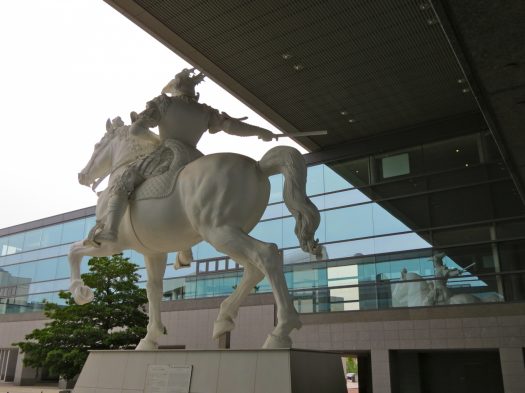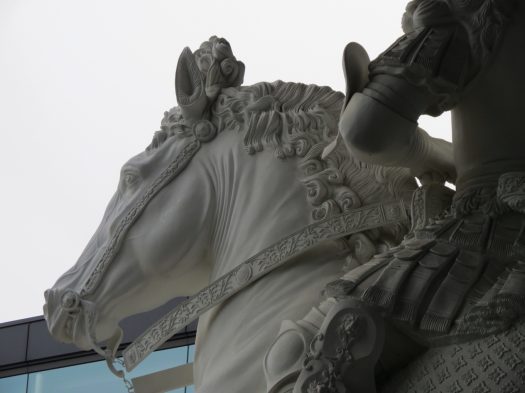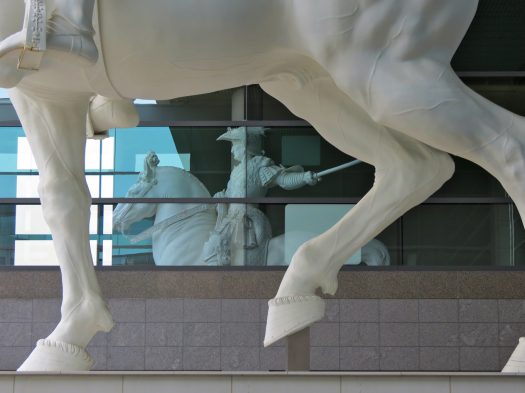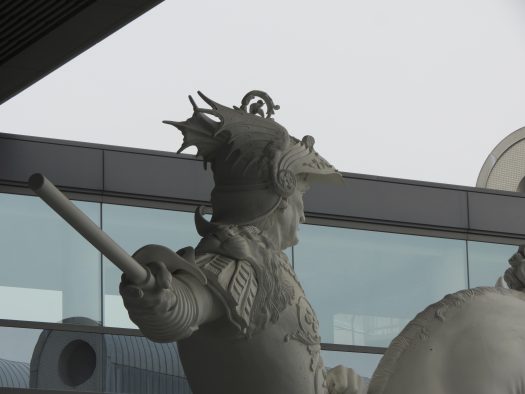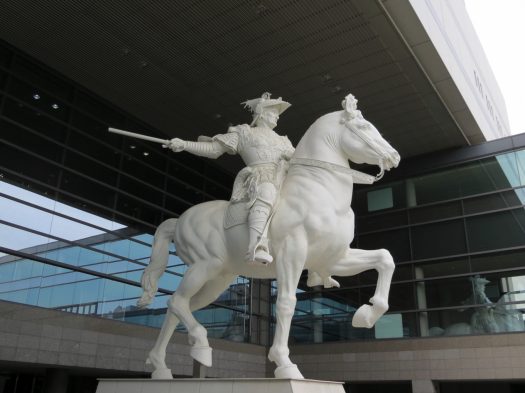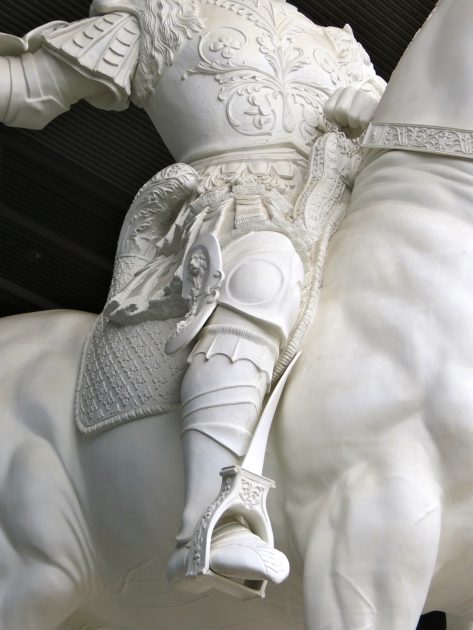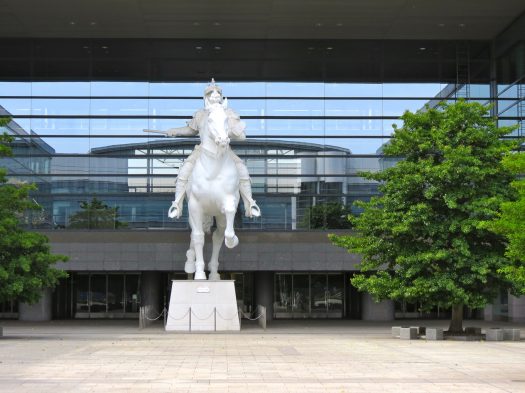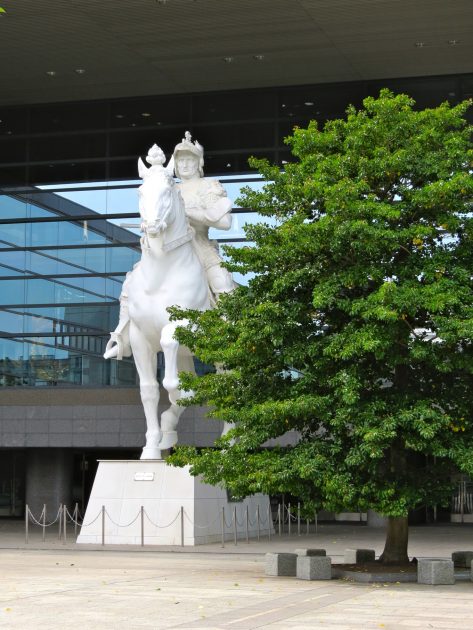Ludovico of Milan commanded Leonardo da Vinci, the grand master of the Italian Renaissance, to create the world’s largest statue, depicting General Francesco Sforza mounted on horseback. By 1493, Leonardo had completed a clay model of the horse, which measured 7.2 meters in height. Unfortunately, war interrupted his work at that point. The planned bronze casting was discontinued, and the clay model was destroyed.
The reconstruction of the “phantom statue” began with the construction of a two-meter clay model based upon the study by Tanaka of manuscripts discovered in 1967, as well as a number of preparatory sketches by Leonardo da Vinci. This model was enlarged using computer technology, and the final version of the statue was molded in plastic (FRP), as the legs would not be able to support the weight of a bronze casting. It is the only of its kind in the world, brought into existence by Japanese research and technology. The height of the statue is 8.3 m, its width 3.6 m and its length 8.8 m.
Tanaka Hidemichi (Tohoku University) supervised and planned the project, and Hideo Asou, Masato Kageyama, Akio Ishizuka (Tokyo University of Fine Arts and Music) created the model.
Leonardo da Vinci created the horse, but did not yet portray the rider. The reconstructed statue has a rider who bears a big resemblance to the Venetian condotierre Bartolomeo Colleoni.
The impressive reconstruction of Leonardo da Vinci’s statue is located in an international conference center in Nagoya (1989)


